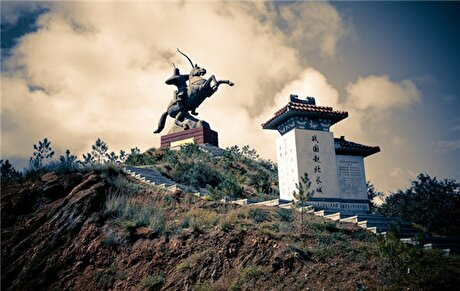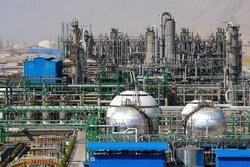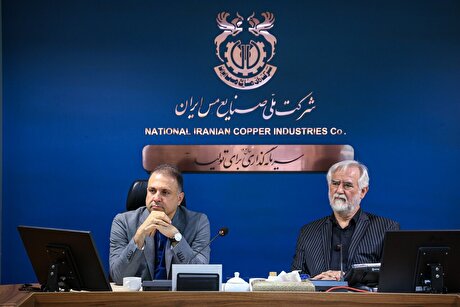
Annual petchem export expected to hit $18b by next March

Morteza Shahmirzaei said that currently, the petrochemical sector has the highest added value in the oil industry chain.
The official further put the country’s annual petrochemical production capacity at 90 million tons.
“Some products were not considered in the previous periods and we were faced with their import at the cost of five billion dollars”, he said, adding, “The products of the propylene chain are of special importance and include 70 percent of the total petrochemical imports. To reduce the dependency, the petrochemical company has focused on the development of value chain projects.”
He went on to say that supply of propylene is important for the supply of feed for this chain, and currently the production capacity of propylene is one million tons per year, and the country's need is more than this amount.
The official explained that 95 percent of propylene produced in the country is used for the production of polypropylene and five percent is used in other sectors. On a global scale last year, 68 percent was in polypropylene and 32 percent in other sectors, so Iran's consumption pattern is different from the world’s pattern.
In the petrochemical industry’s 10-year strategic outlook plan, 35 projects with a nominal capacity of 13 million tons per year for the production of propylene are predicted, which will increase the production capacity of propylene to 14 million tons, of which 11 million tons will be consumed in polypropylene and three million tons in other sectors, Shahmirzaei announced.
Back in mid-May, the official had said that Iran exported petrochemical products valued at more than $15 billion in the past Iranian calendar year 1400 (ended on March 20).
He said that of the mentioned $15 billion petchem revenues, over $12.5 billion was injected into the Forex Management Integrated System, locally known as NIMA.
The petrochemical industry plays a crucial role in Iran’s non-oil economy, as the petrochemical export is the second-largest source of revenue for the country after crude oil. Petrochemical exports already constitute nearly 33 percent of the country’s non-oil exports.
The NPC’s managing director further stressed that petrochemical industry is a value and job-creating industry, which has no risk.
The official said that 69 production units (including three service units which provide services such as water, electricity, and steam for the production units) are now active in the petrochemical industry of Iran, which play some significant role in bringing foreign currency for the country.
Elsewhere in his remarks, Shahmirzaei stressed that domestic production should be realized in all sectors of the petrochemical industry.
A small part is still remained, so that this target will be achieved, he added.
Petrochemical Research and Technology Company and Research Institute of Petroleum Industry in addition to the other related institutes and centers are taking all efforts in this due, the official added.
He mentioned West Eslam-Abad petrochemical project as one of the projects that all of its parts will be domestically produced.
“We should apply five technical knowledge for this project, which require some special preciseness and effort”, Shahmirzaei noted.
Source: Tehran Times


Trump weighs using $2 billion in CHIPS Act funding for critical minerals

Codelco cuts 2025 copper forecast after El Teniente mine collapse

Electra converts debt, launches $30M raise to jumpstart stalled cobalt refinery

Barrick’s Reko Diq in line for $410M ADB backing

Abcourt readies Sleeping Giant mill to pour first gold since 2014

Nevada army depot to serve as base for first US strategic minerals stockpile

SQM boosts lithium supply plans as prices flick higher

Viridis unveils 200Mt initial reserve for Brazil rare earth project

Tailings could meet much of US critical mineral demand – study

Kyrgyzstan kicks off underground gold mining at Kumtor

Kyrgyzstan kicks off underground gold mining at Kumtor

KoBold Metals granted lithium exploration rights in Congo

Freeport Indonesia to wrap up Gresik plant repairs by early September

Energy Fuels soars on Vulcan Elements partnership

Northern Dynasty sticks to proposal in battle to lift Pebble mine veto

Giustra-backed mining firm teams up with informal miners in Colombia

Critical Metals signs agreement to supply rare earth to US government-funded facility

China extends rare earth controls to imported material

Galan Lithium proceeds with $13M financing for Argentina project

Kyrgyzstan kicks off underground gold mining at Kumtor

Freeport Indonesia to wrap up Gresik plant repairs by early September

Energy Fuels soars on Vulcan Elements partnership

Northern Dynasty sticks to proposal in battle to lift Pebble mine veto

Giustra-backed mining firm teams up with informal miners in Colombia

Critical Metals signs agreement to supply rare earth to US government-funded facility

China extends rare earth controls to imported material

Galan Lithium proceeds with $13M financing for Argentina project

Silver price touches $39 as market weighs rate cut outlook



















